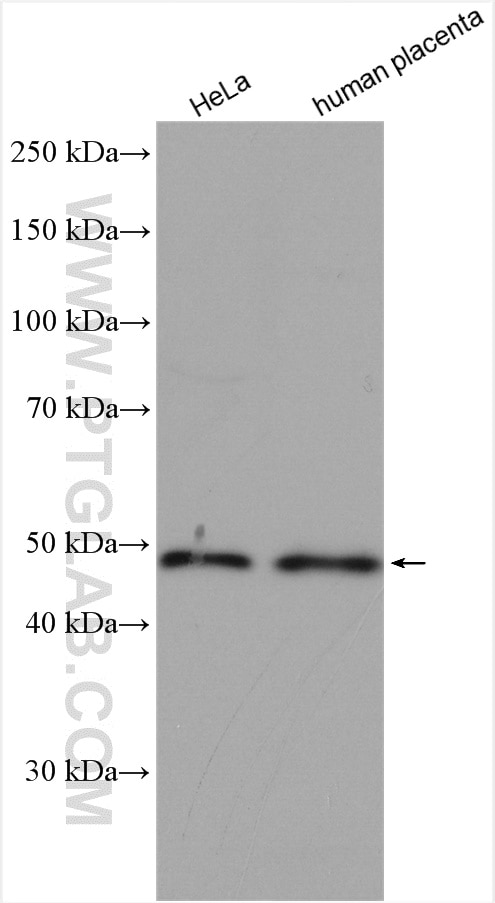Validation Data Gallery
Tested Applications
| Positive WB detected in | HeLa cells, human placenta tissue |
| Positive IHC detected in | human pancreas cancer tissue Note: suggested antigen retrieval with TE buffer pH 9.0; (*) Alternatively, antigen retrieval may be performed with citrate buffer pH 6.0 |
Recommended dilution
| Application | Dilution |
|---|---|
| Western Blot (WB) | WB : 1:500-1:3000 |
| Immunohistochemistry (IHC) | IHC : 1:50-1:500 |
| It is recommended that this reagent should be titrated in each testing system to obtain optimal results. | |
| Sample-dependent, Check data in validation data gallery. | |
Published Applications
| WB | See 1 publications below |
Product Information
15092-1-AP targets ALG2 in WB, IHC, ELISA applications and shows reactivity with human samples.
| Tested Reactivity | human |
| Cited Reactivity | human |
| Host / Isotype | Rabbit / IgG |
| Class | Polyclonal |
| Type | Antibody |
| Immunogen | ALG2 fusion protein Ag4833 相同性解析による交差性が予測される生物種 |
| Full Name | asparagine-linked glycosylation 2, alpha-1,3-mannosyltransferase homolog (S. cerevisiae) |
| Calculated molecular weight | 22 kDa |
| Observed molecular weight | 47 kDa, 37 kDa |
| GenBank accession number | BC015126 |
| Gene Symbol | ALG2 |
| Gene ID (NCBI) | 85365 |
| RRID | AB_2878108 |
| Conjugate | Unconjugated |
| Form | Liquid |
| Purification Method | Antigen affinity purification |
| UNIPROT ID | Q9H553 |
| Storage Buffer | PBS with 0.02% sodium azide and 50% glycerol , pH 7.3 |
| Storage Conditions | Store at -20°C. Stable for one year after shipment. Aliquoting is unnecessary for -20oC storage. |
Protocols
| Product Specific Protocols | |
|---|---|
| WB protocol for ALG2 antibody 15092-1-AP | Download protocol |
| IHC protocol for ALG2 antibody 15092-1-AP | Download protocol |
| Standard Protocols | |
|---|---|
| Click here to view our Standard Protocols |
Publications
| Species | Application | Title |
|---|---|---|
bioRxiv A mechanism that transduces lysosomal damage signals to stress granule formation for cell survival |


